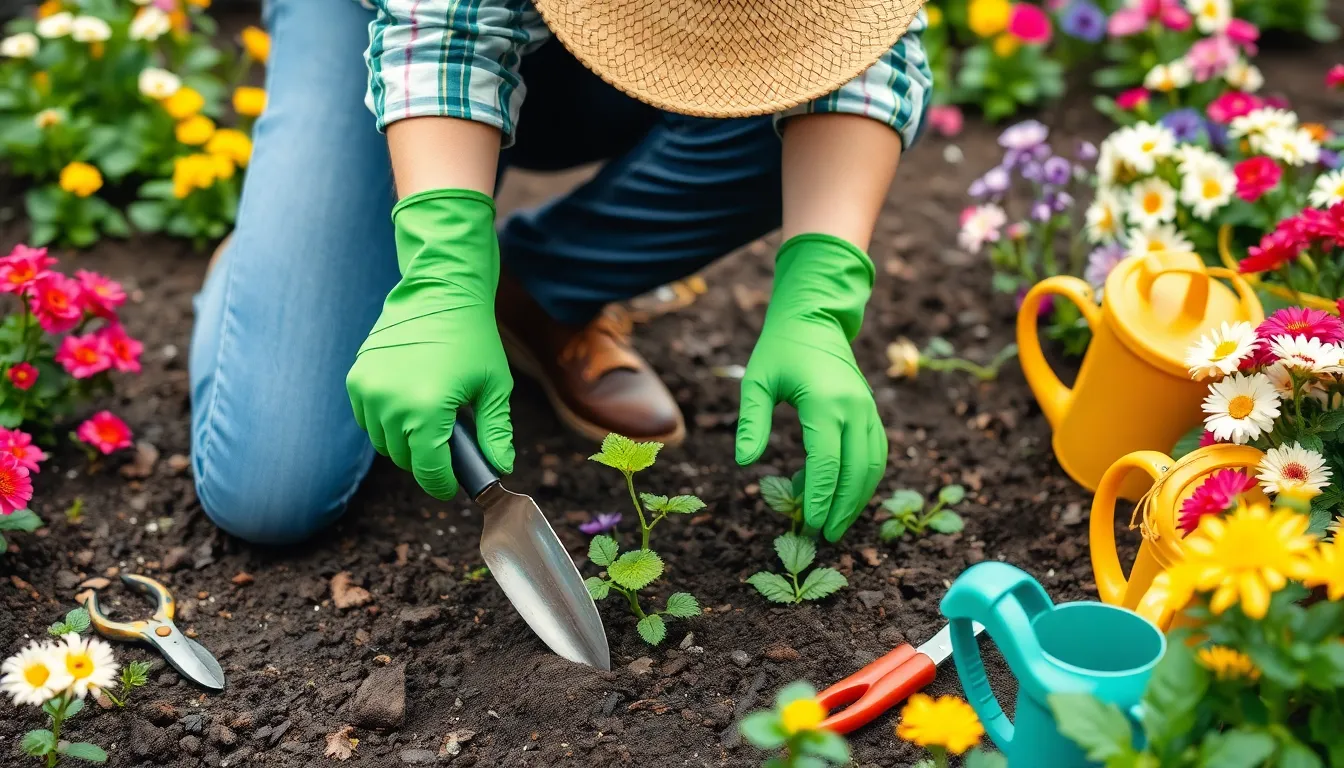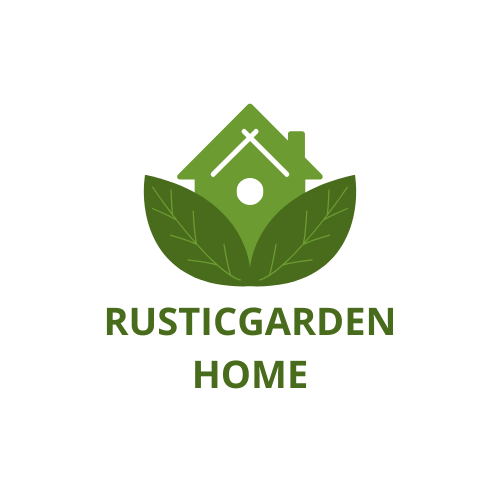Flower gardening isn’t just a hobby; it’s a delightful way to unleash creativity and bring a splash of color to any outdoor space. Imagine stepping into a vibrant world where petals dance in the breeze and bees buzz happily from bloom to bloom. Whether you’re a seasoned green thumb or just starting, the joy of nurturing plants is like therapy for the soul—without the hefty price tag!
flower gardening
Flower gardening offers numerous benefits while allowing creativity to flourish in outdoor spaces. Engaging with plants can enhance mental well-being and provide a productive hobby.
Benefits of Flower Gardening
Flower gardening promotes mental health by reducing stress levels and boosting mood. Engaging in this hobby often encourages physical activity, contributing to overall fitness. Individuals find joy in cultivating beauty, which can lead to a greater appreciation for nature. Additionally, caring for plants encourages mindfulness, helping them reconnect with their surroundings. Developing a flower garden can also foster social connections, as gardeners often share tips, seeds, or blooms with neighbors and friends.
Different Types of Flower Gardens
Numerous types of flower gardens exist, catering to diverse preferences and climates. Perennial gardens feature flowers that return each year, while annual gardens require replanting but often produce more vibrant displays. Container gardens allow for flexibility, using pots to create visually stunning arrangements in small spaces. Eco-friendly gardens focus on native plants to support local wildlife and promote sustainability. Cutting gardens provide blooms for indoor arrangements, encouraging frequent interactions with the floral beauty cultivated outdoors.
Essential Tools for Flower Gardening

Flower gardening requires specific tools to enhance the planting experience. Essential tools simplify tasks such as planting, pruning, and maintaining plants effectively.
Must-Have Tools
- Hand Trowel – A hand trowel allows gardeners to dig small holes for planting seedlings and bulbs.
- Pruning Shears – Pruning shears help maintain plant health by trimming dead or overgrown branches.
- Garden Gloves – Protective gloves shield hands from thorns and dirt while gardening.
- Watering Can – A watering can efficiently delivers water to delicate flowers, especially in containers.
- Hoe – A hoe loosens soil and removes weeds, promoting better growth for flower beds.
Optional Tools for Advanced Gardeners
- Soil Test Kit – A soil test kit assesses nutrient levels, ensuring optimal soil conditions for flowers.
- Rake – Rakes clear debris and level soil, enhancing the aesthetic of flower gardens.
- Garden Fork – A garden fork aerates soil, improving drainage and root growth for plants.
- Plant Labels – Plant labels aid in identifying flower types and tracking growth progress.
- Compost Bin – A compost bin allows for organic waste recycling, creating nutrient-rich fertilizer for plants.
Choosing the Right Flowers
Selecting the right flowers is essential for a vibrant and thriving garden. Different types of flowers cater to various preferences and gardening conditions.
Annual vs. Perennial Flowers
Annual flowers complete their life cycle in one growing season. Popular choices include marigolds, petunias, and zinnias, which provide season-long blooms. These flowers require replanting each year. Perennial flowers return annually and can provide structure to the garden. Examples include echinacea, daylilies, and peonies, which bloom year after year with proper care. Choosing a mix can create both immediate enjoyment and lasting beauty in the garden.
Factors to Consider When Selecting Flowers
When selecting flowers, consider climate, sunlight, and soil type. Climate influences which flowers thrive in specific regions. Sunlight exposure affects blooming success, with some flowers preferring full sun while others thrive in partial shade. Soil type plays a crucial role in water retention and nutrient availability. Assessing these factors leads to healthier plants and a more sustainable garden. Always think about bloom times to ensure consistent color throughout the seasons.
Flower Gardening Techniques
Effective flower gardening techniques enhance plant health and blooming success. Employing proper methods simplifies the gardening process and ensures a vibrant display.
Planting and Spacing Tips
Choosing the right planting site matters. Ensure flowers receive adequate sunlight based on their specific needs. Space plants correctly to allow for air circulation and growth. For most annuals, a spacing of 6 to 12 inches is ideal, while perennials often require more room, typically 12 to 24 inches apart. Checking the mature size of each flower helps in planning the layout. Utilizing raised beds can improve drainage and soil quality, promoting better root development.
Watering and Fertilizing Guidelines
Understanding flower watering needs prevents over-saturation or drought. Water flower beds early in the morning or late in the afternoon to minimize evaporation. Most flowering plants require 1 to 2 inches of water weekly, depending on rainfall. Fertilizing plays a crucial role in growth. For optimal results, apply a balanced fertilizer during planting and again mid-season. Organic options, such as compost or fish emulsion, enhance soil health while providing vital nutrients. Regular monitoring of plant health aids in adjusting watering and fertilizing schedules accordingly.
Challenges in Flower Gardening
Flower gardening presents various challenges that gardeners frequently encounter. These hurdles can hinder blooming success and overall plant health.
Common Pests and Diseases
Common pests and diseases pose significant threats to flower gardens. Aphids, spider mites, and whiteflies often infest plants, feeding on their sap and weakening their vitality. Fungal diseases like powdery mildew and root rot can also affect flowers, particularly in humid conditions. Monitoring plants regularly assists in early detection of infestations or infections. Implementing integrated pest management strategies reduces reliance on chemical pesticides and fosters a healthier ecosystem. Selecting disease-resistant varieties enhances resilience against common ailments, promoting a thriving garden.
Seasonal Changes and Their Impact
Seasonal changes affect flower gardening considerably. Substantial temperature fluctuations can stress plants, impacting their growth and blooming patterns. Additionally, plants may experience dormancy during colder months, necessitating protective measures to ensure survival. Summer heat can lead to increased water evaporation, requiring more frequent irrigation. Gardeners should adjust their care routines based on seasonal demands, ensuring adequate hydration and nutrients throughout the year. Planting flowers suited to each season optimizes growth and blossoms, creating a vibrant and constantly changing landscape.
Conclusion
Flower gardening offers a unique blend of creativity and tranquility that enriches lives. It’s a fulfilling pursuit that invites individuals to connect with nature while enhancing their surroundings. Gardeners can find joy in selecting the right flowers and employing effective techniques to cultivate vibrant spaces.
As they nurture their gardens, they also nurture their well-being, experiencing the mental health benefits that come with this rewarding hobby. Whether one is a novice or a seasoned gardener, the journey of flower gardening is both personal and communal, fostering connections with fellow enthusiasts. Embracing this passion can lead to a flourishing garden and a more joyful life.

